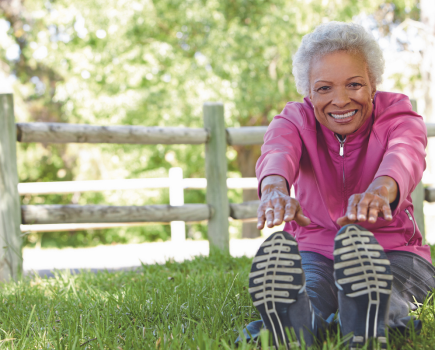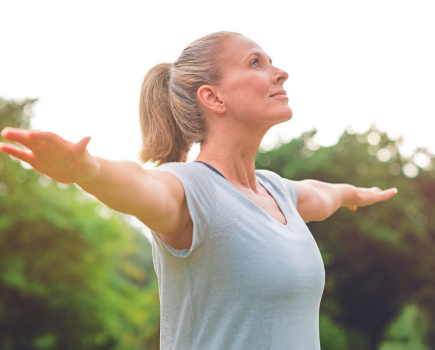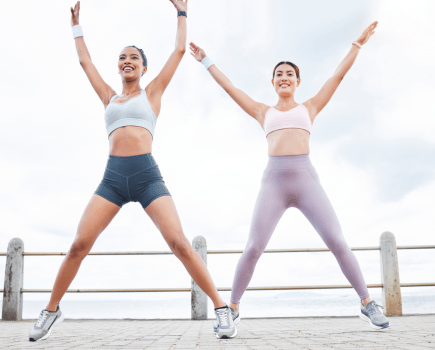Not only is ice skating a festive must-do, it turns out there are lots of health benefits to getting your skates on. We offer some expert tips on how to get started.
There are so many opportunities to lace up your skates at this time of year, as hundreds of twinkling ice rinks spring up around the country. This sociable season can be a bit of a busy time, but an ice skating session is a fun way to make sure you can get some exercise in.
You could incorporate a turn around the ice into a Christmas shopping trip with friends. Or how about making it a family day out, by taking the kids or grand-kids? Ice skating is also a famously romantic activity, so perhaps its time to treat you and your partner to a date night with a difference!
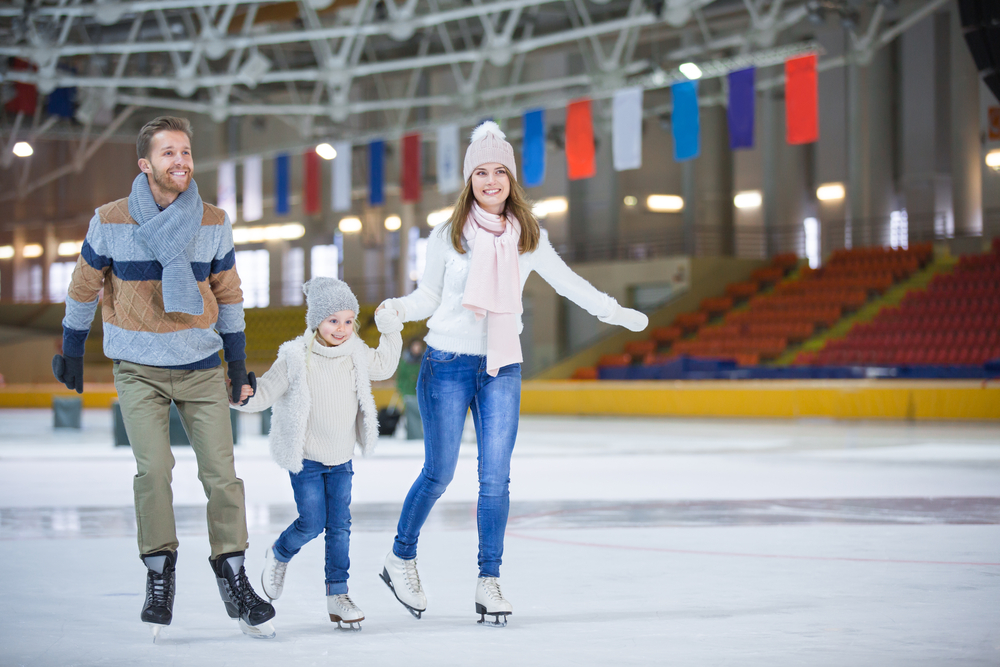
There are plenty of ice arenas open all year round. However, many of the temporary rinks that spring up at this time of year are in garden centres or shopping malls – perfect for finding a place to warm up afterwards with a hot chocolate!
Is ice skating good exercise?
‘Ice skating is a great way to stay fit,’ says Jennifer Barnfield a former British Ice Dance Champion. ‘It will really work your core and your glutes, and help to tone them up. Because of the sub-zero temperatures, your body also has to work harder to maintain body temperature and to generate the energy to skate. So even as a beginner, your body will be put through its paces – but in an incredibly fun way.’
Time on the rink will also increase your flexibility and fitness, without putting too much pressure on your joints. It’s a good alternative to higher-impact activities in winter, when your joints can feel a bit more tender. ‘It’s a brilliant low-impact sport,’ says Jennifer.
Because you’re keeping your body steady while moving across a slippery surface, ice skating will naturally improve your balance, co-ordination and body awareness. It’s also a great boost to your self-esteem. ‘That cool breeze in your face is enough to make it feel like you’re Rose on the front of the Titanic with the wind in her hair!’ says Jennifer.
How to ice skate
It will be chilly on the ice, so it’s important to gently warm up your muscles (particularly in your legs) before you start. ‘Stretch your quads by holding one foot towards your bottom, and gently stretching out the front of your thigh,’ advises Jennifer. Do this again with your other leg.
‘Then work your bottom and back, by bending forwards slowly and touching your toes (or your knees, if that’s easier),’ she says. Gradually return to standing, uncurling one vertebrae at a time.
‘Warm up your calves by placing your foot on its heel as you push your bottom back, stretching the back of your leg,’ says Jennifer. Repeat on the other side.
‘You could repeat these warm up stretches for the cool down,’ says Jennifer, ‘but do it in a snug place, like the cafe or changing rooms.’
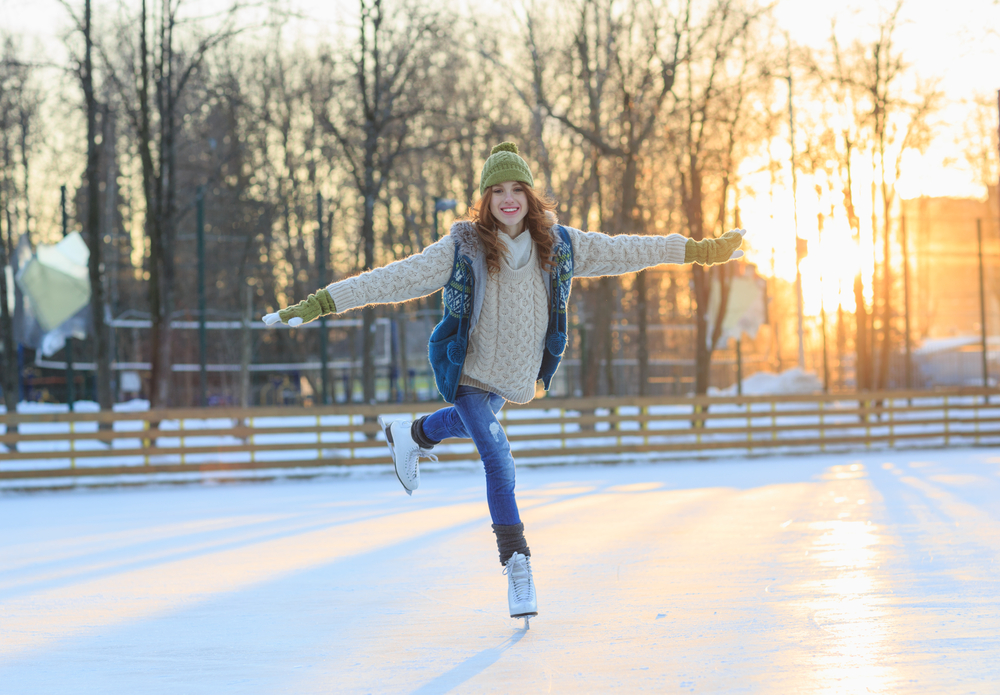
How to skate without falling over
When you’re first sliding out on the ice, it’s tempting to keep looking down. Make sure you keep your eyes up and ahead. Many beginners tend to put their arms out like aeroplane wings, but try to keep them softly at around hip height. ‘Maintain a straight but comfortable back posture,’ says Jennifer. ‘Engage your core and keep your tummy firm. Keep your knees and ankles soft, take a deep breath and smile. Remember, you’re there to have fun!’
Perfect your ice skating technique
When you’re ready to move, Jennifer suggests keeping your feet in the shape of a ‘V’. ‘Take small penguin-like steps, in a marching manner, but without waddling from side to side,’ she advises. ‘You’ll find yourself gliding forwards!’ As you build up confidence, you can start to go faster. When you’re ready to stop, put your feet in parallel, and bend your knees gently.
Once you’ve mastered the art of skating forwards, it’s time to learn how to turn a corner. ‘Your shoulders are like the steering wheel of a car,’ says Jennifer. ‘Turn them to the left and you will turn anti-clockwise, to the right and you’ll turn clockwise. Try this with your boots parallel and almost touching each other.’
Skating with ‘lemons’
If you’re ready for a basic trick, it’s time to learn lemons! With your feet parallel, bend your knees and push your feet away from each other in a diagonal direction. When your feet reach hip width, start to straighten your legs and curve your toes into each other until your blades meet back in a parallel line. ‘You will have drawn the shape of a lemon on the ground,’ says Jennifer. ‘This can be a continuous movement down the ice, and used to gain a little speed too. It’s a great workout for your legs and bottom.’
How to fall and get up safely when skating
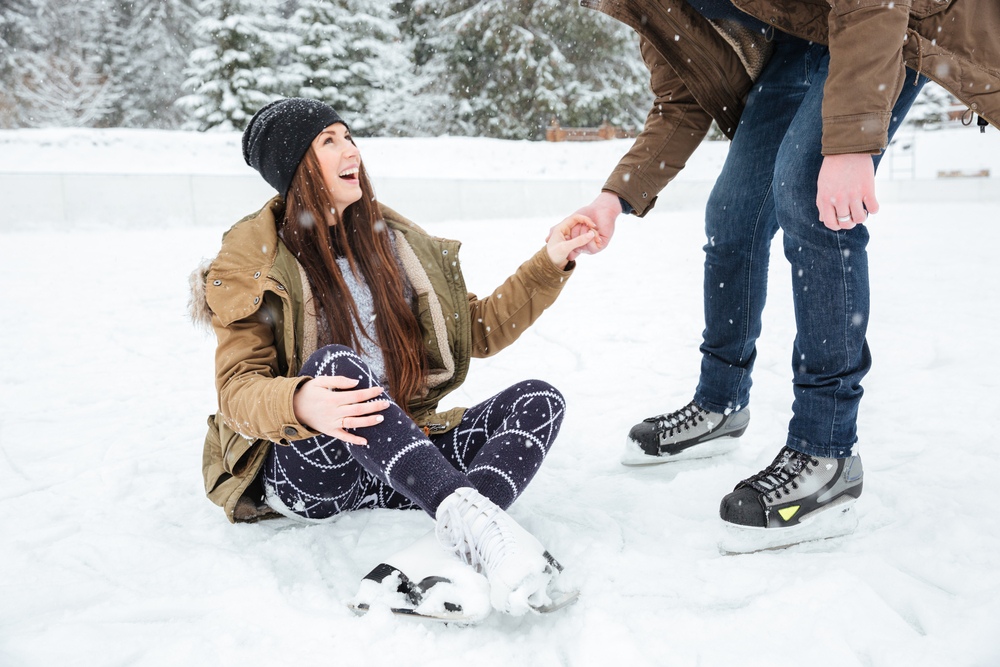 Some people are put off because they’re worried about taking a tumble, but it’s a very normal part of the learning process. To minimise your chance of injury, try to keep your body as soft as possible when you fall (and wear gloves to protect your hands.)
Some people are put off because they’re worried about taking a tumble, but it’s a very normal part of the learning process. To minimise your chance of injury, try to keep your body as soft as possible when you fall (and wear gloves to protect your hands.)
‘Getting up is the tricky part,’ says Jennifer. ‘Make sure you’re on your bottom, close your legs and swish them over to one side. Then, manoeuvre onto your hands and knees. Place one skate under your chest, rise up onto a straight leg with your bottom in the air, and steadily place the other ice skate parallel with the first one. Keep your hands on the ice until you are stable and slowly lift your body up back into a standing position. Ta-da!’
- Now read about the health benefits of rollerskating
- Why having a Christmas tree is good for your health




